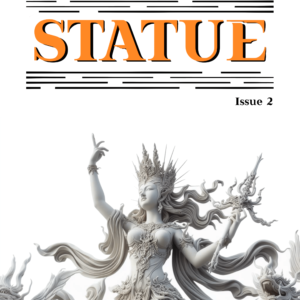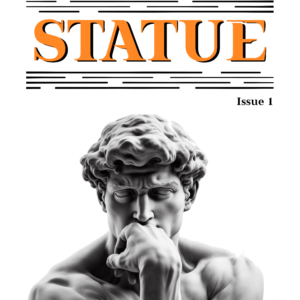Welcome to Sensational Series, articles in which we explore modern series of novels. If you are interested in classic authors, why not check out our Literary Legends articles here?
The “Millennium Trilogy” by Stieg Larsson, comprising “The Girl with the Dragon Tattoo,” “The Girl Who Played with Fire,” and “The Girl Who Kicked the Hornet’s Nest,” is a groundbreaking series that has captivated readers worldwide with its complex characters, intricate plots, and incisive social commentary. Larsson’s trilogy has left an indelible mark on the crime fiction genre, blending traditional elements of the thriller with contemporary concerns about corruption, misogyny, and the abuse of power. This review explores the key elements that contribute to the trilogy’s success and enduring impact on literature.
“There are no innocents. There are, however, different degrees of responsibility.”
The Girl Who Played with Fire, 2010
At the heart of the “Millennium Trilogy” is the dynamic and unconventional duo of Lisbeth Salander and Mikael Blomkvist. Salander, a fiercely intelligent and resourceful hacker with a troubled past, emerges as one of the most compelling and original protagonists in modern fiction. Her distinct appearance, marked by tattoos and piercings, belies her vulnerability and the traumatic experiences that have shaped her. Larsson crafts Salander as a character of remarkable depth and complexity, defying traditional gender roles and challenging readers’ preconceptions about strength and resilience.
A Background in Journalism
Mikael Blomkvist, an investigative journalist and co-owner of the magazine “Millennium,” serves as the perfect foil to Salander. His dogged pursuit of truth and justice, often at great personal risk, underscores the trilogy’s critique of institutional corruption and moral complacency. Blomkvist’s collaboration with Salander not only drives the narrative but also highlights themes of partnership and trust, illustrating how their complementary skills and perspectives enable them to confront formidable adversaries.
“The Girl with the Dragon Tattoo,” the first novel in the series, sets the stage with a compelling mystery involving the disappearance of Harriet Vanger, a young woman from a wealthy industrial family. Larsson masterfully intertwines this central plot with the backstory of Blomkvist’s legal troubles and Salander’s personal struggles. The novel’s intricate structure, characterised by multiple narrative threads and meticulous attention to detail, creates a rich and immersive reading experience. Larsson’s background in journalism is evident in his thorough and realistic portrayal of investigative procedures, lending the story a sense of authenticity and immediacy.
A Satisfying Ending to a Trilogy
The second instalment, “The Girl Who Played with Fire,” delves deeper into Salander’s past, revealing more about her traumatic childhood and the systemic abuse she endured. This novel shifts focus from the Vanger family saga to a broader conspiracy involving human trafficking and corruption within Sweden’s legal and governmental institutions. Larsson’s critique of societal hypocrisy and the failure of the state to protect its most vulnerable citizens is both scathing and poignant. The narrative gains momentum as Salander becomes the primary suspect in a series of murders, compelling Blomkvist to unravel a complex web of deceit to clear her name and expose the true perpetrators.
“The Girl Who Kicked the Hornet’s Nest,” the trilogy’s conclusion, continues the exploration of themes introduced in the previous books, culminating in a dramatic and satisfying resolution. As Salander confronts her tormentors and seeks justice for the wrongs committed against her, Larsson examines the broader implications of her struggle, emphasising the resilience of the human spirit and the enduring power of truth. The novel’s courtroom drama and political intrigue provide a fitting backdrop for the final showdown, showcasing Larsson’s ability to blend suspense with social commentary.
A Swedish Critique of Universal Issues
One of the most remarkable aspects of the “Millennium Trilogy” is Larsson’s incisive critique of systemic corruption and the abuse of power. Through his portrayal of corrupt officials, unscrupulous businessmen, and complicit media, Larsson exposes the dark underbelly of Swedish society, challenging the notion of the country as a bastion of social justice and equality. His exploration of these themes resonates on a global scale, highlighting the universality of the issues he addresses and prompting readers to reflect on the moral and ethical challenges facing their own societies.
In addition to its social and political commentary, the trilogy is notable for its strong feminist undertones. Larsson’s depiction of Salander as a survivor of sexual violence who refuses to be defined by her victimisation is both empowering and subversive. By giving voice to her experiences and highlighting the systemic failures that enabled her abuse, Larsson underscores the importance of confronting and dismantling patriarchal structures. The trilogy’s portrayal of female agency and resilience has had a profound impact on the crime fiction genre, inspiring a new generation of writers to explore similar themes in their work.

Larsson’s narrative style, characterised by its brisk pacing, intricate plotting, and richly developed characters, contributes significantly to the trilogy’s appeal. His ability to create tension and suspense, coupled with his keen eye for detail and nuanced understanding of human behavior, ensures that each novel is both intellectually engaging and emotionally resonant. Larsson’s commitment to authenticity and realism, particularly in his depiction of investigative journalism and hacker culture, lends the series a sense of credibility and gravitas that elevates it above typical genre fare.
The “Millennium Trilogy” by Stieg Larsson is a landmark achievement in contemporary crime fiction. Through its compelling characters, intricate plots, and incisive social commentary, the trilogy addresses themes of corruption, abuse, and resilience in a way that is both powerful and thought-provoking. Larsson’s work has left an enduring legacy, inspiring readers and writers alike to confront the darker aspects of society and to champion the cause of justice. The series stands as a testament to the power of storytelling to illuminate the human condition and to effect meaningful change.



